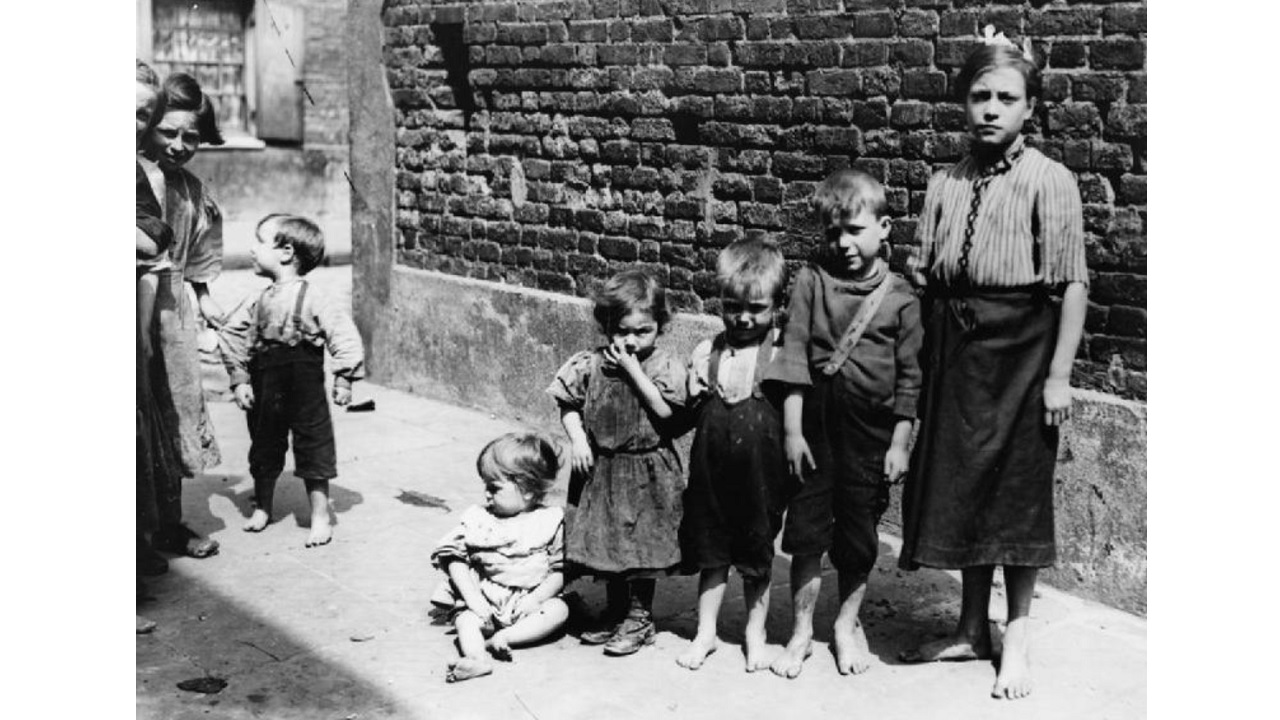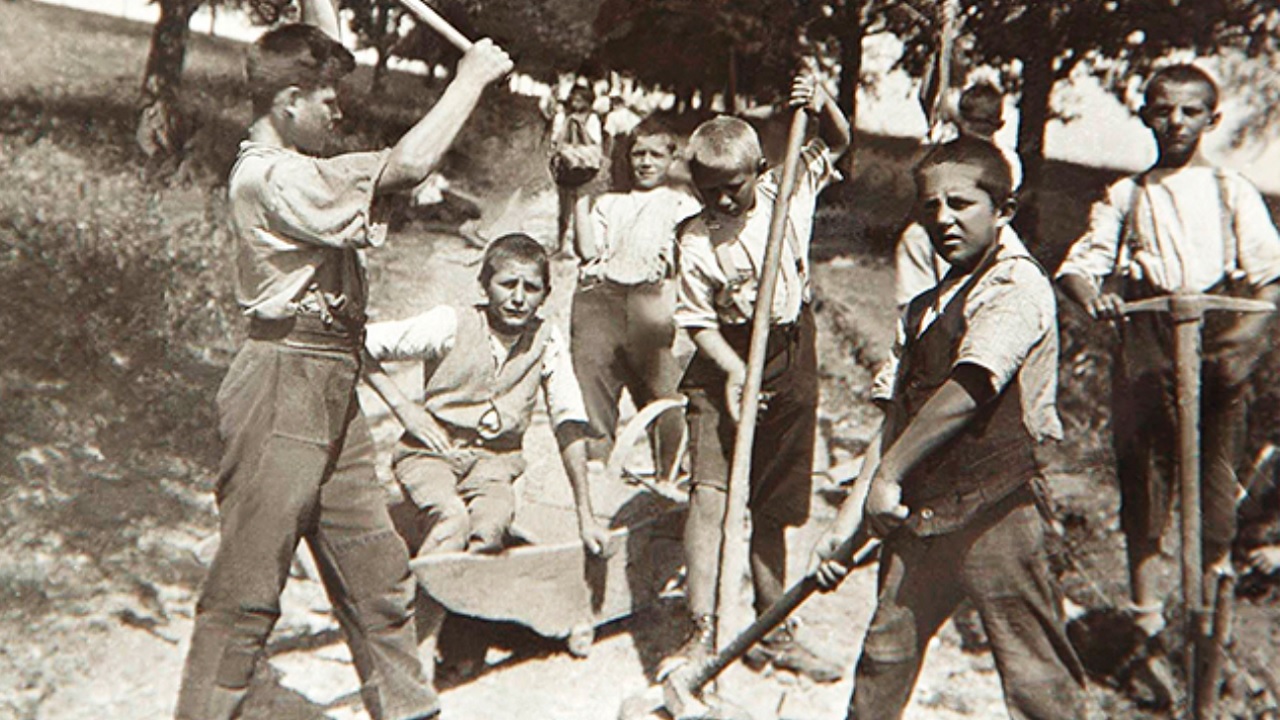The cartoon named Heidi locked the children of that period in front of the screen. The novel based on this cartoon, in which we watch the adventures of a cute girl in the Alps with her grandfather and her friend, is actually extremely tragic because it tells the story of the slave labor of children in Switzerland until recently. Let’s take a closer look at whether the Heidi story is true.
We all learned the story of Heidi through a cartoon made in the 1970s and translated into many languages, including Turkish. The adventures of a cute girl in the Alps of Switzerland with her grumpy grandfather and her cute goatherd friend were the most enjoyable times of our childhood. But we paid no attention or ignored it; running with joy, Heidi’s feet were bare, even when walking on the mountain.
The story of Heidi, which has been adapted into numerous films and cartoons, is actually a novel written in the late 1800s. The novel also tells a cute children’s story, but when we dig a little deeper into the story, we come across children named Verdingkinder, who were worked as slaves in Switzerland until recently. Unfortunately, we are past the age of believing in children’s fairy tales. Let’s see if Heidi’s story is real or what it actually tells in all details.
For those who don’t know, let’s summarize the Heidi story:
Heidi is a cute 5-year-old girl. She lives with her aunt because she lost her parents when she was 1 year old. When his aunt found a maid job in the metropolitan He leaves him with his grandfather, who lives in a village in the Alps of Switzerland. Despite his grandfather being a grumpy man, Heidi’s cheerful demeanor eventually warms up between them.
In this mountain village, Heidi has a friend named Peter. Peter works as a goat herder in the village. Passing the days joyfully in the mountains with Peter Heidi’s aunt comes and takes her to the house where she works in the metropolitan area. This is Frankfurt, Germany. The daughter of the house, Clara, is a young and sad girl who has to use a wheelchair. Of course, Heidi cheers him up and they become friends.
However, Heidi misses the mountains, her grandfather, Peter and is very tired of the pressure of the nanny of the house. When Heidi became sleepwalking due to stress The owner of the house allows him to return to his village. Clara comes to visit Heidi, who has returned to her village and regained her health. They get along very well together, but Peter gets a little jealous and throws Clara’s wheelchair off a cliff.
Something miraculous happens and he’s wheelchair-bound. Clara somehow starts walking. His father, who came to the village, is very happy to see this and allows Heidi to settle in the town with her grandfather so that she can study. Clara starts walking and Heidi starts reading. Now they have become friends with unbreakable bonds between them.
The Heidi novel, which has been adapted into numerous films and cartoons:

Before moving on to the background of the story, let’s talk a little bit about the novel that founded this whole world. By Swiss author Johanna Spyri Children’s novel written in German in 1880 Heidis lehr- und wanderjahre and Heidi kann brauchen, was es gelernt hat was published in two parts.
The novel Heidi became the most popular work of that period from the moment it was published. The book was translated into English in 1882 and in Japanese in 1906. The Heidi story gradually becomes the favorite of all the children of the world.
The novel was adapted for the first time in 1937 by director Allan Dwan as Heidi. By the directors of many different countries in the 1950s, 60s and 70s, H.The eidi story is adapted for the cinema. What makes it most popular is the 1974 cartoon by Isaho Takahata. This beloved story still inspires many TV series, movies and cartoons today.
At this point, let’s give a little detail; The novel Heidi was criticized by some for having a conservative narrative, i.e., it criticizes the city life and praises the village life when it was published. One more detail, a researcher named Peter Buettner made a statement in 2008 and Heidi’s novel Hermann said that he had plagiarized from a book written by Adam Von Kamp. So there is a claim that Heidi’s work is stolen.
Let’s come to our topic; Is the Heidi story true, what does it actually tell?

Unfortunately, what we’re about to tell you will no longer smile when you hear the name Heidi. Attentive viewers have noticed; Heidi doesn’t wear shoes, she walks barefoot. Don’t say, dear, we used to walk around the village like that; Heidi’s feet are bare in the snow, bare in the mud, bare in the rain. Because he is actually Verdingkinder, a figure representing slave children.
To translate the word Verdingkinder directly barefoot kids means. The emergence of these children took place in Switzerland, which is considered the greatest representative of human rights today. Although Switzerland made a show decision in 1789 by banning children under the age of 14 from working in the factory, they actually had children legally worked as slaves until recently, befitting their primitive Vikings.
The greatest crime against humanity in history was committed in Switzerland:

There was a system in Switzerland that started in the 18th century. In this system, children of divorced families, children of families indebted to the state, children whose families lost their lives, children who were somehow involved in crime were taken from their families and relatives and given to other families by the church. Unfortunately, the purpose of these families was not to raise those children in peace.
These given children are employed by families, hired to work on other farms, or worse, was sold to other families. So these children were literally used as slaves. These children, who were treated inhumanely, slept with the animals in the barn, were never fed properly, had their small bodies worked in the heaviest jobs, and were systematically beaten, tortured and sexually abused as if that wasn’t enough.
Of course, since the Swiss, the staunch defenders of human rights, do not even see these children as human beings. to separate them from other children They were forced to walk barefoot. Because of these features, they were called Verdingkinder, or barefoot children.
For many years the child slave system was practiced:

Swiss society was so accustomed to this system that these children who were sexually abused, beaten and tortured was completely ignored. The causes of death of the children who lost their lives because of what happened to them were hidden by local doctors. A Russian doctor in the region reported this situation, but gradually some reaction voices rose.
It may be, dear, you may think that it is past time, but it is not. taking place in Switzerland This inhumane system of slavery was only banned in 1981. Until 1981, a few decades ago, there were still slave children in Switzerland. It was only in 2013 that the Swiss state thought of apologizing to these children.
If you’re asking if the Heidi story is true, no it isn’t. Heidi’s story is so cute though Unfortunately, the truth is much more painful. What is even more painful is that the perverted groups, which until recently made children work as slaves and abused them, are giving a lesson in humanity to other countries of the world without shame or even apology. You can share your thoughts on the subject in the comments.
